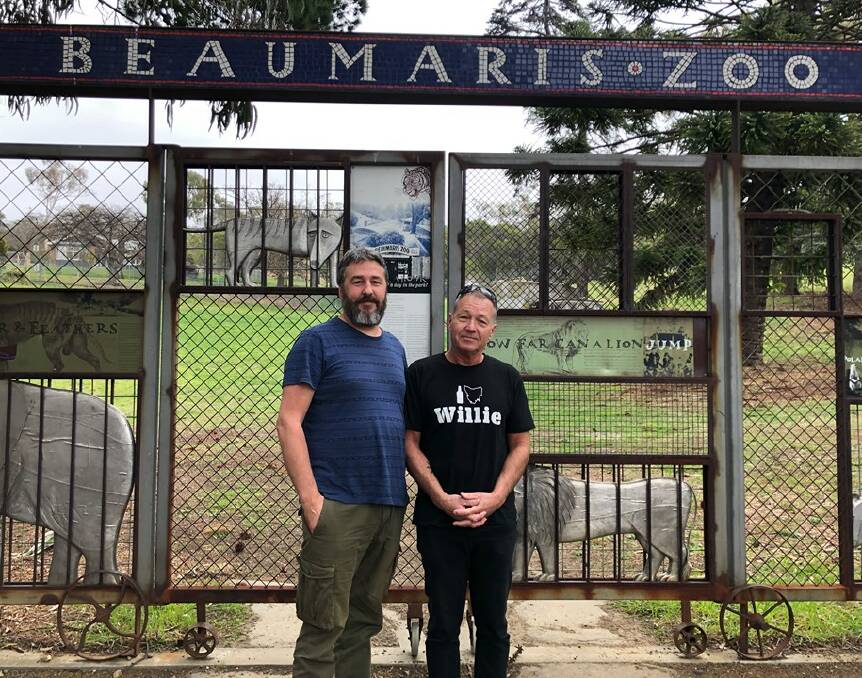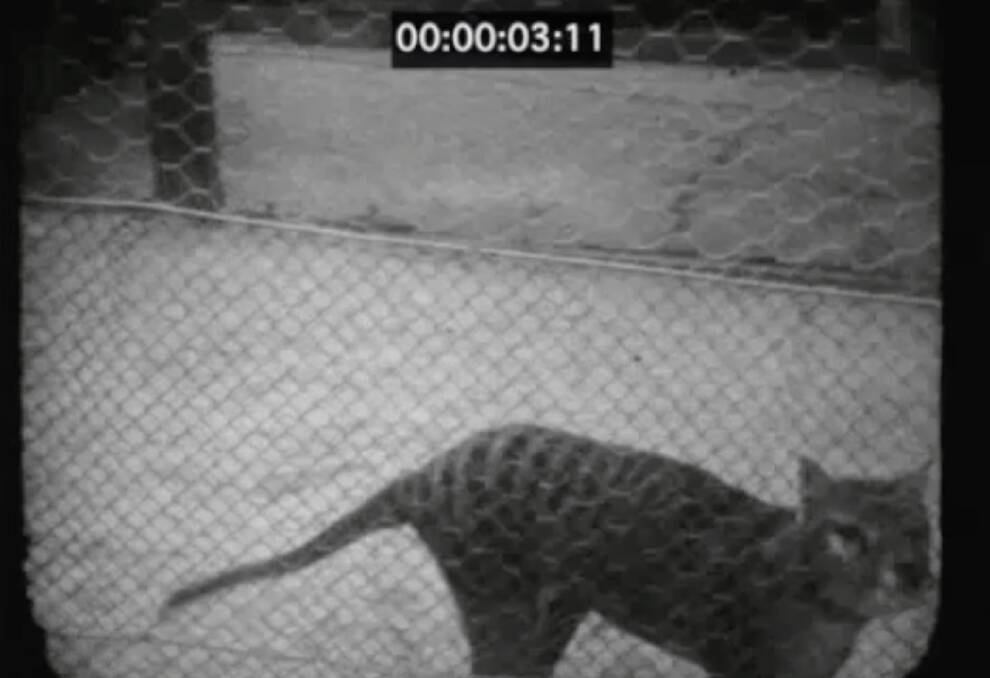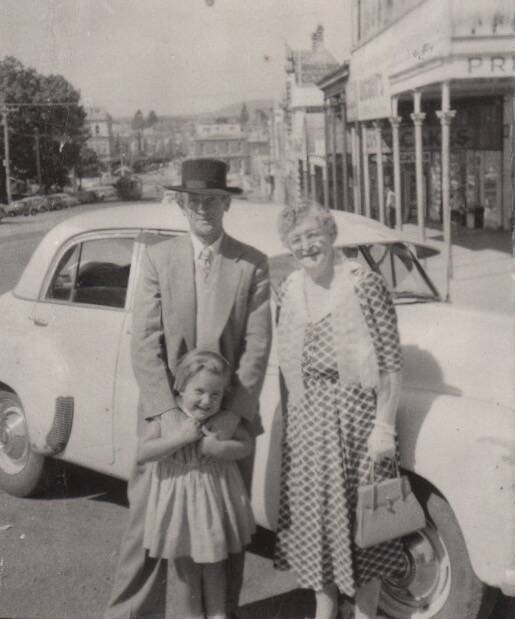
Last year was a big one for thylacine researchers Mike Williams, Gareth Linnard and Branden Holmes.
Subscribe now for unlimited access.
$0/
(min cost $0)
or signup to continue reading
The trio are behind the Tasmanian Tiger Archives Facebook page, and tasked themselves with uncovering more about the history of what is perhaps the state's most notorious animal.
Spending hours searching through state and national archives, the trio uncovered previously unseen vision of a thylacine in captivity at Hobart's Beaumaris Zoo, helping to change previous perceptions about the elusive animal's behaviour.
Their latest work is a paper for the Tasmanian Historical Research Association, proposing a date and captor for the last thylacine.
Mr Linnard said they believed the Delphin family, from Magnet, were behind the last two thylacine captures.
"We've always suspected that the Delphin's supplied the last captive, but the only article on it reported it was female, and we knew the last captive was male," he said.

"When we found the Doyle film [one of their discoveries in 2020], we could see it was a male cub."
It set the trio on a journey to first date the footage. After extensive research, including searching through the National Film and Sound Archive, they dated it to 1930.
They then set out to uncover the story behind the capture.
"Our information has come from the Delphin family and their archive of letters, and previous authors on the subject," Mr Linnard said.
"The Delphin family consisted of among others, 19-year-old twins Roy and Gordon, their mother Mary, sister Dorothy, and their uncle Dan Delphin - at the time the bankrupt ex-landlord of the Magnet Hotel."
Existing research places the last capture of a live, wild thylacine in the South-West in 1933, but the evidence Mr Williams, Mr Linnard and Mr Holmes have gathered say it was in the North-West in 1930.
"Based on a re-examination of evidence from David Fleay [a prominent Victorian zoologist] and the minutes from the Hobart City council's reserves committee," Mr Linnard said.
Mr Fleay visited the Beaumaris Zoo in December 1933, and gave four identifying characteristics of the last captive tiger - two of which were consistent with the capture by the Delphin family. This included the gender of the animal and the scar consistent with being captured via a springer or treadle snare.
"However, he could not have independently arrived at the conclusion that the thylacine had been captive for three years, or that it was purchased as a juvenile," Mr Linnard wrote in the paper.
"A second passage in the article suggests a source of this information as being Mr Reid, who was the Beaumaris' curator since its inception.
"He would have known when the only thylacine in his care had been acquired, and is Fleay's most likely source.
"Suggesting that the last captive entered Beaumaris as a juvenile between late 1930 and early 1931 can be as confidently accepted as is his gender and the presence of his scar."
The research paper suggests there are inaccuracies in previous evidence, including dating methods, as well as new evidence presented from the Delphin family.
It is suggested that the resulting cumulative evidence best supports the suggestions that the last captive thylacine was retrieved from a treadle snare, in the vicinity of Waratah by 19-year-old Roy and 58-year-old Dan on the evening of Monday July 7 ,1930
- Mike Williams, Gareth Linnard and Branden Holmes
"This was not the last verified capture, which was of a female in the same area, between August 3 and 9 1930 by Roy and Gordon."
The female later died in captivity at the Delphin's home, and family reports say the skin ended up being turned into a waistcoast for Dan Delphin, which Mr Linnard said was "an incredibly strange thing to do as it was worth a week's wages and the family were dirt poor".

As part of their evidence gathering, Mr Williams, Mr Linnard and Mr Holmes interviewed Delphine Enkler, Roy and Gordon Delphin's niece.
Mr Linnard said Ms Enkler and her uncle Roy were quite close, and a strong tradition had been preserved in the family about the two tigers they captured.
According to the paper, Ms Enkler recalled that "uncle Roy did confirm the snare mark when we showed him a picture of the Tasmanian tiger from Hobart zoo, pointing out the snare mark on the hind leg saying that's how he knew it was his tiger".
The evidence presented in the paper by Mr Williams, Mr Linnard and Mr Holmes suggests that, based on the details provided by Mr Fleay and family records, the last known thylacine, that died in captivity at the Beaumaris Zoo in Hobart, was indeed that of the Delphin family.
While potentially controversial to some researchers, they are releasing their findings in the hopes of of generating discussion about some of the uncertain historical details that still pertain with the thylacine.
"We'd like to raise awareness of both the thylacine and why we need to maintain an evidence based approach," Mr Linnard said.
More information, and an area for discussion, can be found on the Tasmanian Tiger Archives Facebook page.
What do you think? Send us a letter to the editor:


